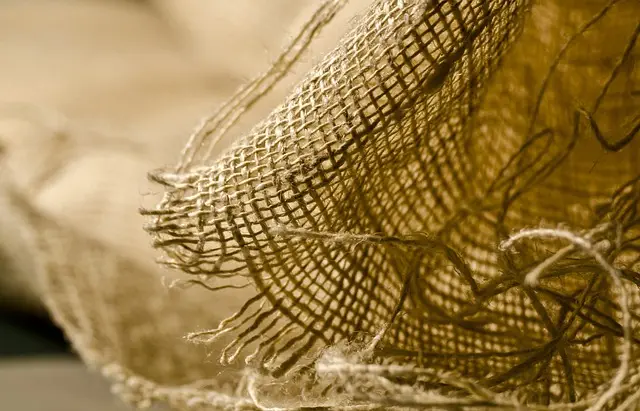Muscle soreness post-exercise is a common issue that can hinder fitness progress and demotivate individuals. To manage this discomfort effectively, it's important to have a personalized workout regimen that accommodates individual physiological responses and employs a diverse range of exercises to prevent overuse injuries and their associated soreness. Complementary recovery strategies include engaging in low-impact activities like swimming or cycling to promote blood flow and incorporating regular stretching and mobility work to maintain muscle flexibility and alleviate tension.
For those exploring natural remedies, the kratom tree, depicted in pictures that showcase its natural environment, has gained attention due to its potential to assist with pain management related to muscle soreness. The alkaloids found in kratom leaves, such as mitragynine and 7-hydroxymitragynine, may interact with opioid receptors to provide pain relief, potentially offering a safer alternative to conventional analgesics with fewer side effects. However, it's essential to approach kratom use with caution, considering individual health factors and consulting healthcare providers beforehand due to its complex regulatory status and the need for careful dosing. A holistic recovery approach that combines kratom with rest, nutrition, and targeted exercises can help maintain exercise progression and minimize disruption from soreness. Kratom tree pictures serve as informative visual aids, highlighting the plant's traditional use and therapeutic potential. Always seek professional medical advice to ensure safe and effective incorporation of kratom into your recovery routine.
When muscle soreness strikes after an intense workout, finding relief becomes a top priority for fitness enthusiasts. This article delves into the creation of tailored exercise regimens designed to ease discomfort. We explore the underlying mechanisms of muscle soreness and introduce innovative strategies for recovery. Additionally, we examine Kratom Tree insights as a natural alternative for post-exercise relief, accompanied by captivating kratom tree pictures that enhance understanding of this intriguing botanical remedy. Join us as we navigate the path to a healthier, less sore workout experience.
- Unraveling Muscle Soreness: The Role of Customized Workout Plans in Recovery and Relief
- Exploring the Science Behind Muscle Soreness and Effective Mitigation Strategies
- Kratom Tree Insights: A Natural Approach to Alleviating Post-Exercise Discomfort
Unraveling Muscle Soreness: The Role of Customized Workout Plans in Recovery and Relief

When muscle soreness strikes, it can hinder an individual’s fitness journey and lead to a decrease in motivation. The key to managing post-exercise soreness lies in a well-crafted workout regimen that accommodates each person’s unique needs and response to physical activity. Customized workout plans play a pivotal role in this context, as they can be tailored to incorporate recovery techniques that mitigate discomfort. These personalized routines often integrate a variety of exercises that target different muscle groups, allowing for a balanced approach to training while minimizing the risk of overexertion and subsequent soreness. Incorporating a mix of low-impact activities, such as swimming or cycling, can provide a gentler form of exercise that still promotes blood flow and aids in the healing process. Additionally, proper stretching and mobility work can be included to maintain flexibility and reduce tension in the affected muscles.
For those seeking natural remedies to complement their workout recovery strategies, the kratom tree, particularly through its pictures that showcase its leaves and natural settings, has garnered attention for its potential benefits in managing pain and inflammation. The alkaloids found within kratom leaves are believed to interact with the body’s opioid receptors, offering pain-relieving effects without the side effects associated with traditional pharmaceuticals. However, it is crucial to approach the use of kratom with caution, as its efficacy and safety can vary greatly depending on individual physiology and should only be considered after consulting with a healthcare professional. Integrating such natural supplements into a customized workout plan can provide an additional layer of relief for those experiencing muscle soreness. It is important to note that any such inclusion in one’s recovery strategy should be done thoughtfully, with consideration for dosage, timing, and the potential interactions with other medications or supplements.
Exploring the Science Behind Muscle Soreness and Effective Mitigation Strategies

Muscle soreness, a common experience among individuals engaging in new physical activities or after intense workouts, is a natural response to the stress placed on the muscle fibers during exercise. This phenomenon, known as delayed-onset muscle soreness (DOMS), typically occurs 24 to 72 hours post-exercise and is associated with microtrauma and inflammation within the muscles. The science behind muscle soreness involves the activation of various signaling pathways that lead to an influx of calcium into the muscle cells, triggering repair processes that can result in the sensation of pain. Understanding this biochemical process is crucial for developing effective mitigation strategies.
To alleviate muscle soreness, a combination of rest, proper nutrition, and targeted exercises can be beneficial. Among the natural supplements gaining attention for their potential muscle-soothing properties is kratom, derived from the kratom tree, which has been traditionally used in Southeast Asia for pain relief. Pictures of the kratom tree show its leaves, which contain alkaloids such as mitragynine and 7-hydroxymitragynine, compounds believed to influence pain perception by interacting with opioid receptors in the brain. While more human research is needed to fully understand its effects on muscle soreness relief, anecdotal evidence and some preliminary studies suggest that kratom may offer a natural approach to reducing discomfort associated with muscle fatigue. However, it’s important to consult with healthcare professionals before incorporating any supplements like kratom into a workout regimen, as it can have side effects and interactions with other medications. Additionally, incorporating gentle stretching, foam rolling, or activities that promote blood flow and flexibility can aid in recovery by reducing stiffness and tension in the muscles. Integrating these strategies can help maintain exercise progression while minimizing the impact of muscle soreness.
Kratom Tree Insights: A Natural Approach to Alleviating Post-Exercise Discomfort

The kratom tree, a native of Southeast Asia, offers a natural approach to alleviating post-exercise discomfort that is increasingly gaining recognition among fitness enthusiasts. The Mitragyna speciosa, commonly known as kratom, contains alkaloids that have been traditionally used for their pain-relieving and energizing effects. For those experiencing muscle soreness following a workout, certain strains of kratom may provide relief due to its anti-inflammatory properties. While scientific research is still emerging, anecdotal evidence suggests that the right dosage of kratom can mitigate discomfort without the side effects often associated with over-the-counter pain medication. Additionally, kratom tree pictures serve as a visual aid, showcasing the tree’s unique characteristics and potential therapeutic benefits, which can be a valuable resource for individuals curious about this natural remedy. When incorporating kratom into a workout recovery routine, it is important to approach its use with caution and consult with healthcare professionals to ensure safety and appropriate dosing, given the legal status and regulatory considerations surrounding kratom in various regions.
In conclusion, addressing muscle soreness through tailored workout plans is a multifaceted approach that combines understanding the science behind muscle fatigue with the exploration of natural remedies. The role of customized exercise regimens in recovery and relief from soreness is pivotal, as they can be adapted to individual needs and activity levels. Additionally, insights from the kratom tree, often depicted in kratom tree pictures, offer a promising alternative for those seeking natural methods to alleviate post-exercise discomfort. By integrating scientifically sound strategies with holistic practices, individuals can find effective relief and enhance their overall wellness journey.






